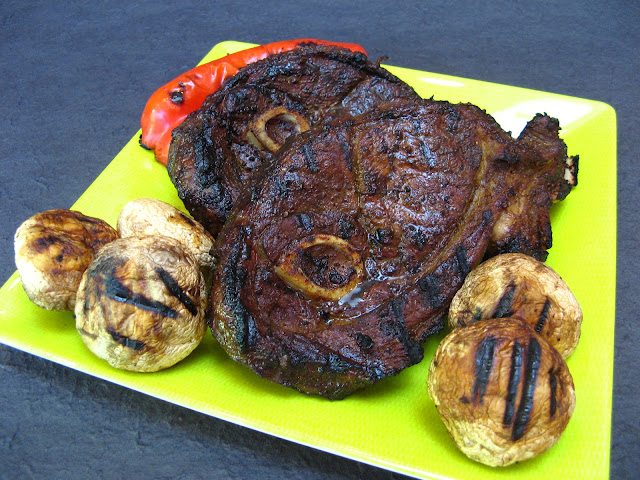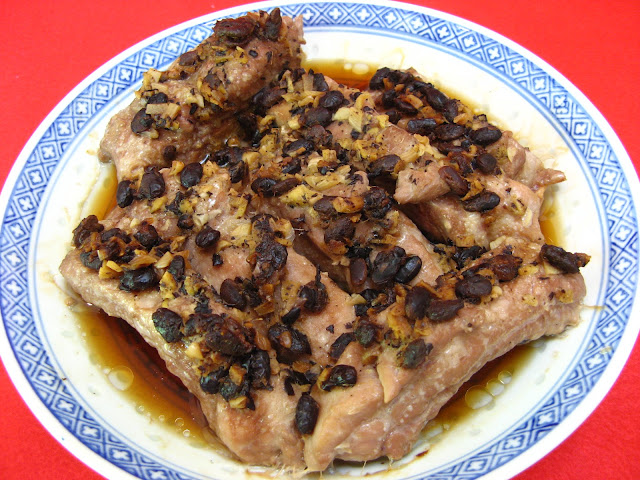This recipe was updated on 25 Sep 2015. Some instructions
and ingredient quantities were changed.
I had some marinated ground turkey and bitter melon in my
refrigerator and was trying to figure out what to do with these ingredients to
make dinner. I thought about making a dish with a spicy black bean sauce, which
sounded yummy in my mind, but I decided that recipe could wait until a later
date. I then thought about the Eggs
with Bitter Melon (Scrambled Style) (苦瓜炒蛋, Fu2
Gwaa1 Caau2 Daan6) and Eggs
with Bitter Melon (Pancake Style) (苦瓜炒蛋, Fu2
Gwaa1 Caau2 Daan6) recipes, and decided
that I could modify the scrambled style dish to incorporate ground turkey. So
this recipe is the result, and you could just as easily use ground pork or beef
to make this dish.
I usually buy and marinate a 2-3 lb. (1-1.5 kg.) package of
ground turkey. Only ½ lb. (250 g.) of the turkey is used for this recipe, so
the rest can be used to make turkey burgers or to make other dishes: Asparagus
Turkey, Spaghetti
with Basil Turkey Meatballs, Turkey
Basil Cheeseburger with Tzatziki Sauce, and Turkey
Basil Mushroom Egg Cheeseburger. The recipe specifies marinade for ½ lb.
(250 g.) of ground turkey.
Enjoy!






